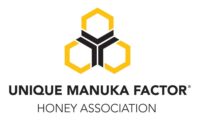 In recent years, Manuka honey from New Zealand has earned a reputation as a health food sensation. Research has shown that the honey has powerful antibacterial qualities that help combat MRSA, fight infections, reduce wound inflammation and help with skin conditions such as acne and eczema.* However, with so many different brands laying claim to the unique health benefits, how do retailers and distributors know they are stocking true to label products?
In recent years, Manuka honey from New Zealand has earned a reputation as a health food sensation. Research has shown that the honey has powerful antibacterial qualities that help combat MRSA, fight infections, reduce wound inflammation and help with skin conditions such as acne and eczema.* However, with so many different brands laying claim to the unique health benefits, how do retailers and distributors know they are stocking true to label products?
The UMF® Honey Association is rolling out a global initiative, including links with international government testing facilities. The campaign aims to guarantee the UMF® trademark is only used by suppliers who meet the stringent rating system and therefore retailers and consumers are protected.
Manuka honey must be shown to come from the nectar collected by bees from the New Zealand Manuka bush (Leptospermum scoparium) and have ‘Non Peroxide Activity’ (NPA); the special strain of antibacterial activity that is unique to Manuka honey as it remains relatively stable even after exposure to minimum heat and light.
The UMF® Honey Association has appointed UK Government Laboratory, Fera (The Food and Environment Research Agency) to assist with laboratory testing of Manuka honey to distinguish composition and geographical origin and ensure all products are true to label.
Adrian Charlton, BSc PhD, MRSC, biochemist at Fera comments, “Because of Manuka honey’s unique antimicrobial property, there is great demand for it, and it can command higher retail prices than most other types of honey. With such high stakes, it is essential that consumer confidence in the integrity of the industry is maintained.
Any honey can contain properties that may help healing e.g. hydrogen peroxide, pH level etc but some Manuka honey can also contain a non-hydrogen peroxide antimicrobial agent that makes it unique. With the level of this agent varying between Manuka honeys, it is vital that producers and retailers can provide robust evidence to support labelling claims about the activity of their products.”
The UMF® Honey Association is an organisation which verifies and authenticates true Manuka honey and works to inform and protect shoppers. They argue that there is the potential for a proliferation of honeys carrying essentially meaningless and misleading descriptions such as ‘active 10+’ or ‘active manuka’ on-pack and that these brands compromise the integrity of the whole Manuka honey industry if not verified.
John Rawcliffe, spokesperson for the UMF® Honey Association comments, ‘Honey that does not carry the UMF® stamp of approval has not gone through our rigorous procedures, such as testing for NPA, so to put ‘active’ or to use a number such as ‘10+’ on pack could be seen as meaningless unless verified. These descriptions are used to describe the level of antibacterial activity unique to UMF® Manuka honey. But on a jar of non-UMF® honey it is impossible to know. Buying the product may have no more value than purchasing an ordinary jar of honey. The product inside may not even be from Manuka and may be, at best, a ‘manuka blend’.”
The UMF® Honey Association believes the solution is to educate consumers to look on-pack for the Unique Manuka Factor (UMF®) quality trade mark, which ensures that products are true to label and which only licensed users – whose Manuka Honey is true to origin, label claim and composition – can carry on their jars. The UMF® Honey Association has developed a marketing pack that retailers can request for free and use in store to support the sale of true to label products.
*The Honey Research Centre at Waikato University (http://bio.waikato.ac.nz/honey/)
For more information retailers can visit www.umf.org.nz/uk/retailer or request a marketing pack directly from ukcampaign@umf.org.nz




Comments are closed.